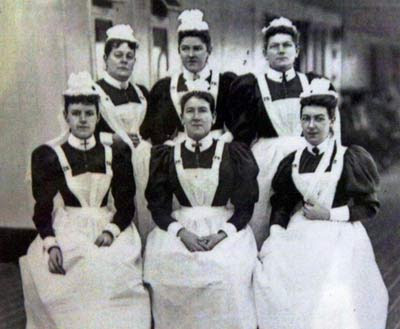Just Missed the Titanic - Part IV
/Several prominent members of society literally missed the boat. Today, see why one of America’s wealthiest families booked passage on Titanic, then never boarded the ship. In 1805, Cornelius Vanderbilt quit school at the age of 11 to work on his father’s ferry in New York Harbor. At 16, he bought a boat and began his own ferry service. Cornelius expanded his company until 1849, when he switched his interests to ocean-going vessels. He later invested in railroads, increasing his wealth and eventually becoming the richest man in the world.
In 1888, his grandson, George Washington Vanderbilt II, bought land in Ashville, North Carolina and began construction of the famous mansion known as the Biltmore Estate. He and his wife, Edith Stuyvesant, a descendant of New York’s first governor, filled their 250-room home with original artwork and antiques purchased on their travels around the globe. They also donated funds to begin Vanderbilt University.
220px-GeorgeWVanderbiltII
edith_cornella
George Washington Vanderbilt II, Edith and Cornelia Vanderbilt
While in Europe in 1912, George and Edith booked a first class cabin on the luxurious new Titanic for their return home. Their footman, 24-year-old Edwin Charles “Frederick” Wheeler, boarded the ship early and brought along several pieces of the Vanderbilt’s luggage. However, someone in the family strongly opposed taking a ship on its maiden voyage. Too many things could go wrong.
George and Edith decided to take Titanic’s sister ship, the Olympic, instead. By the time word reached Frederick, it was too late to unload the Vanderbilt’s luggage, so he stayed onboard, enjoying his second class accommodations. After the sinking, his body was not recovered.
wheeler-larger-vanderbilt-valet-on-the-titanic
Frederick Wheeler walking with 2 passengers aboard Titanic while the ship was docked in Queenstown, Ireland
Alfred Gwynne Vanderbilt, George’s nephew, had also planned to sail on Titanic. The NewYorkTimes reported that he’d boarded the ship at Cherbourg, France. But A.G. sent his mother a cablegram from London on the day of the sinking to let her know he was safe.
Alfred_Vanderbilt.-221x300
A.G. Vanderbilt
Three years later, A.G. boarded the Lusitania in order to attend a meeting of the International Horse Breeders’ Association in England. The ship was hit by a German torpedo off the coast of Ireland and sank in 18 minutes. A.G. gave his lifebelt to a woman holding her baby. He and his valet died in the sinking and their bodies were not recovered.
biltmore
The Biltmore Estate today
Credits: southeastdiscovery.com, encyclopediatitanica.com, thefreegeorge.com, Wikipedia.org.











